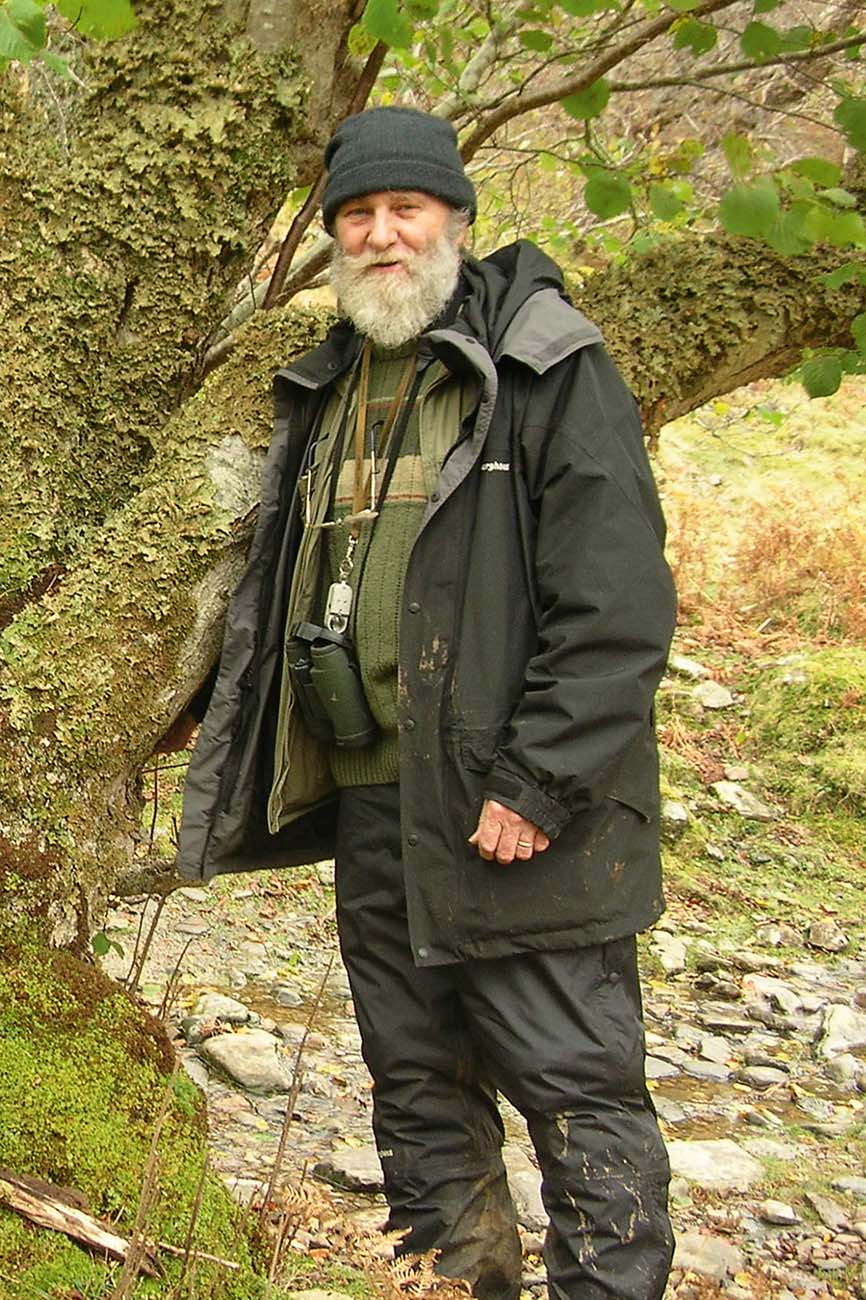
This issue of The Lichenologist is dedicated to Brian Coppins on the occasion of his 65th birthday.
Brian has been at the heart of British Lichenology since 1974 when he was appointed to the position of Ascomycete Taxonomist in the herbarium at The Royal Botanic Garden Edinburgh (RBGE), and even before that, while still an undergraduate at the University of Hull, he had already published his first major work (in the prestigious journal Oikos) on lichen dynamics in managed heathland. In 1983 he gained even wider recognition following the publication of his PhD thesis A taxonomic study of the lichen genus Micarea in Europe, a work and genus that symbolizes his attention to the smallest detail. Brian has remained in Edinburgh for the duration of his working life, specializing in the taxonomy of crustose groups, working, to a large extent, on whichever genus appeared to be most in need of attention: the British species of Ramonia, Vezdaea, Psilolechia, Arthropyrenia, Catillaria, Arthonia, Halecania were all revised, while he continued to describe new species of Micarea and many other genera, particularly in collaboration with overseas authors. Brian has also worked extensively to document the lichen mycota of habitats in many parts of Britain, usually with his wife, Sandy. He is most at home in the Atlantic hazel woods and native pine woods, but alpine areas, coastal dunes and shingles, and even disused metal-mines have all come under his scrutiny. Although Brian's field research has largely been focused in Britain, and Scotland in particular, he has collected in other regions, such as Borneo, Chile, the Carpathians, Thailand, Norway and Canada and, thanks to the specimens sent to him for identification, he has collaborated in describing new species from many other parts of the world.
As well as being a world authority on crustose lichens, it should not be forgotten that Brian's official title at RBGE was ‘Ascomycete Taxonomist' and his knowledge of ascomycetes in general, and lichenicolous fungi in particular, is also first-rate. Brian has given generously of his time as a teacher and mentor, both in the field and in the laboratory, and has held various editorial positions. He was a member of the Editorial teams for both editions of the Lichen Flora of Great Britain and Ireland, either authoring or co-authoring over one fifth of the genera accounts in both volumes, and he has authored or co-authored several revisions of the Checklist of Lichens of Great Britain and Ireland. He was for many years Senior Editor of the Edinburgh Journal of Botany (1984–2001) and continues to serve on the editorial boards of The Lichenologist and the Turkish Journal of Botany. He was President of the British Lichen Society from 1988-89, elected an Honorary Member in 1994 and awarded the BLS Ursula Duncan Award in 2005. In recognition of their lifetime contributions to conservation of UK lichens, Brian and Sandy were presented with The Plantlife Award for Contributions to the Conservation of Plant Diversity (2009), and Brian has also been awarded the Acharius Medal by the International Association of Lichenology (2010) and the Linnean Medal for Botany by the Linnean Society of London (2012).
Because Brian has been a member of the editorial board of The Lichenologist since 1983, this made a regular issue of the journal the obvious place to honour him. Unfortunately, this placed constraints on the size of the volume and, consequently, also limited the number of people we could invite to contribute. We have attempted to obtain a balance of old friends and colleagues, both recent and those that are now established lichenologists, but we are painfully aware that many others would have wished to contribute to the volume. Many colleagues and collaborators have had the benefit of Brian and Sandy's warm hospitality in their home outside Edinburgh, and after dinner perhaps have enjoyed a ‘dram’ or two of a Scottish malt while discussing lichenology late into the evening. Commemorative volumes such as this are usually known as a Festschrift or ‘celebratory writing’, but I suspect Brian would prefer the Latin equivalent, Liber amicorum or ‘book of friends’. To all Brian's friends and colleagues whom space did not allow us to invite to contribute, we apologize and hope they will join with us in celebrating Brian's lifetime of commitment to lichenology.


